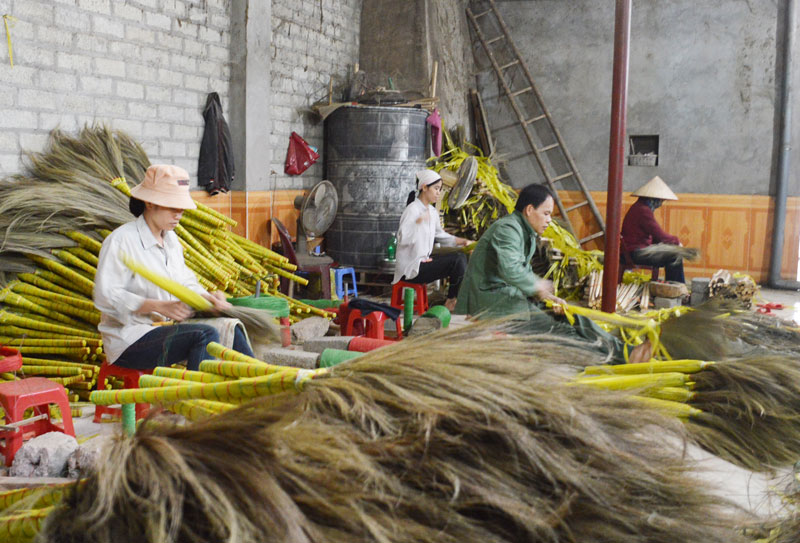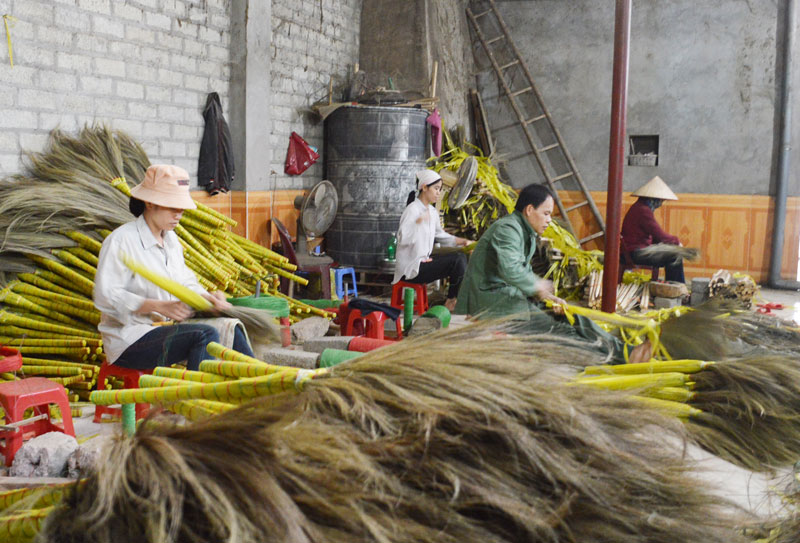
(HBO) - Ky Son district houses hundreds of industrial and handicraft establishments processing agro-fishery products as well as producing construction materials and apparel, among others. The locality’s industrial production value reached 651.3 billion VND (28.15 million USD) in the first nine months of 2019, fulfilling 76 percent of the yearly target.

Ky Son’s industrial production value reached 651.3 billion VND in the first nine months of 2019.
The sum was earned mainly from the production of
construction materials, garment-textile products, woodwork products, and
processed farm produce. In the past time, most large firms, including Son Thuy
join stock company and Japfa Comfeed Vietnam, recorded effective operation.
To date, the district has basically completed targets set by
the 17th provincial Party Congress’ Resolution, with its annual per
capita income hitting 52 million VND and the rate of poor households standing
at 6.03 percent.
Head of the Ky Son Economy and Infrastructure Office Tran
Thanh Tung said the district is having great opportunities for industrial
development as planned. It is home to two industrial parks, namely Yen Quang
and Mong Hoa – each spanning 200 hectares, where land clearance activities are
underway to give way to infrastructure construction.
Currently, investors are
eying business in the local sectors of industrial manufacturing and processing,
clean water supply, and animal feed production. Ky Son authorities, meanwhile, are
focusing on administrative reform and offering assistance to speed up progress
of industrial projects, in a bid to increase budget collection and local
economic growth./.
According to data from the Hoa Binh Provincial Party Committee, the industrial production index for the first six months of 2025 is estimated to have increased by 20% compared to the same period last year. This marks the highest year-on-year growth rate for this period since 2020.
In the first six months of 2025, Hoa Binh province’s export turnover was estimated at 1.145 billion USD, marking an 18.11% increase compared to the same period in 2024. Import turnover was estimated at $ 804 million, a 17.15% increase, which helped the province maintain a positive trade balance.
The lives of the ethnic minority farmers in Tan Lac district have gradually improved thanks to the new directions in agricultural production. This is a testament to the collective strength fostered through the professional associations and groups implemented by various levels of the district’s Farmers’ Union.
With the motto the "product quality comes first,” after nearly one year of establishment and operation, Muong village’s Clean Food Agricultural and Commercial Cooperative, located in Cau Hamlet, Hung Son Commune (Kim Boi district), has launched reputable, high-quality agricultural products to the market that are well-received by consumers. The products such as Muong village’s pork sausage, salt-cured chicken, and salt-cured pork hocks have gradually carved out a place in the market and they are on the path to obtaining the OCOP certification.
In the past, the phrase "bumper harvest, rock-bottom prices" was a familiar refrain for Vietnamese farmers engaged in fragmented, small-scale agriculture. But today, a new spirit is emerging across rural areas of Hoa Binh province - one of collaboration, organisation, and collective economic models that provide a stable foundation for production.
Maintaining growing area codes and packing facility codes in accordance with regulations is a mandatory requirement for agricultural products to be eligible for export. Recently, the Department of Agriculture and Environment of Hoa Binh province has intensified technical supervision of designated farming areas and packing facilities to safeguard the "green passport" that enables its products to access international markets.



